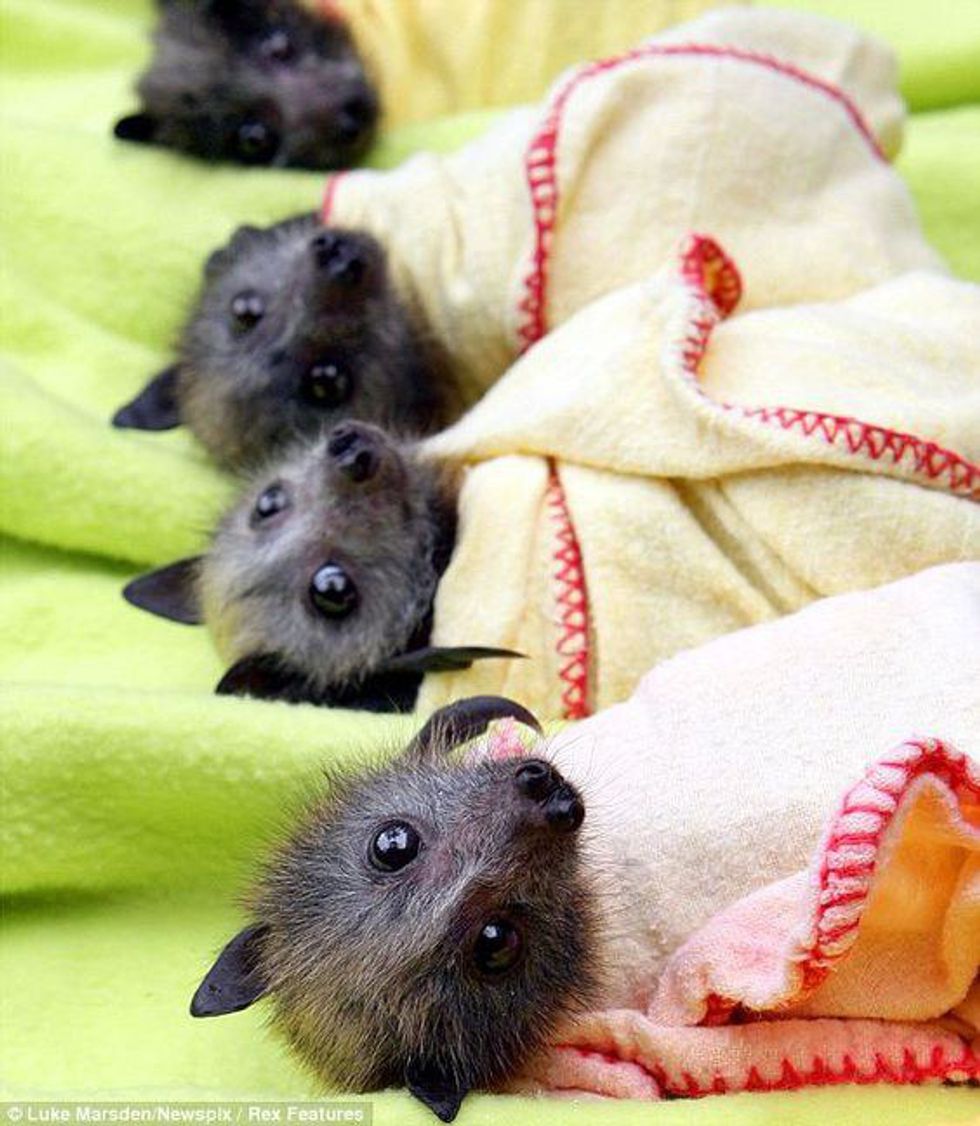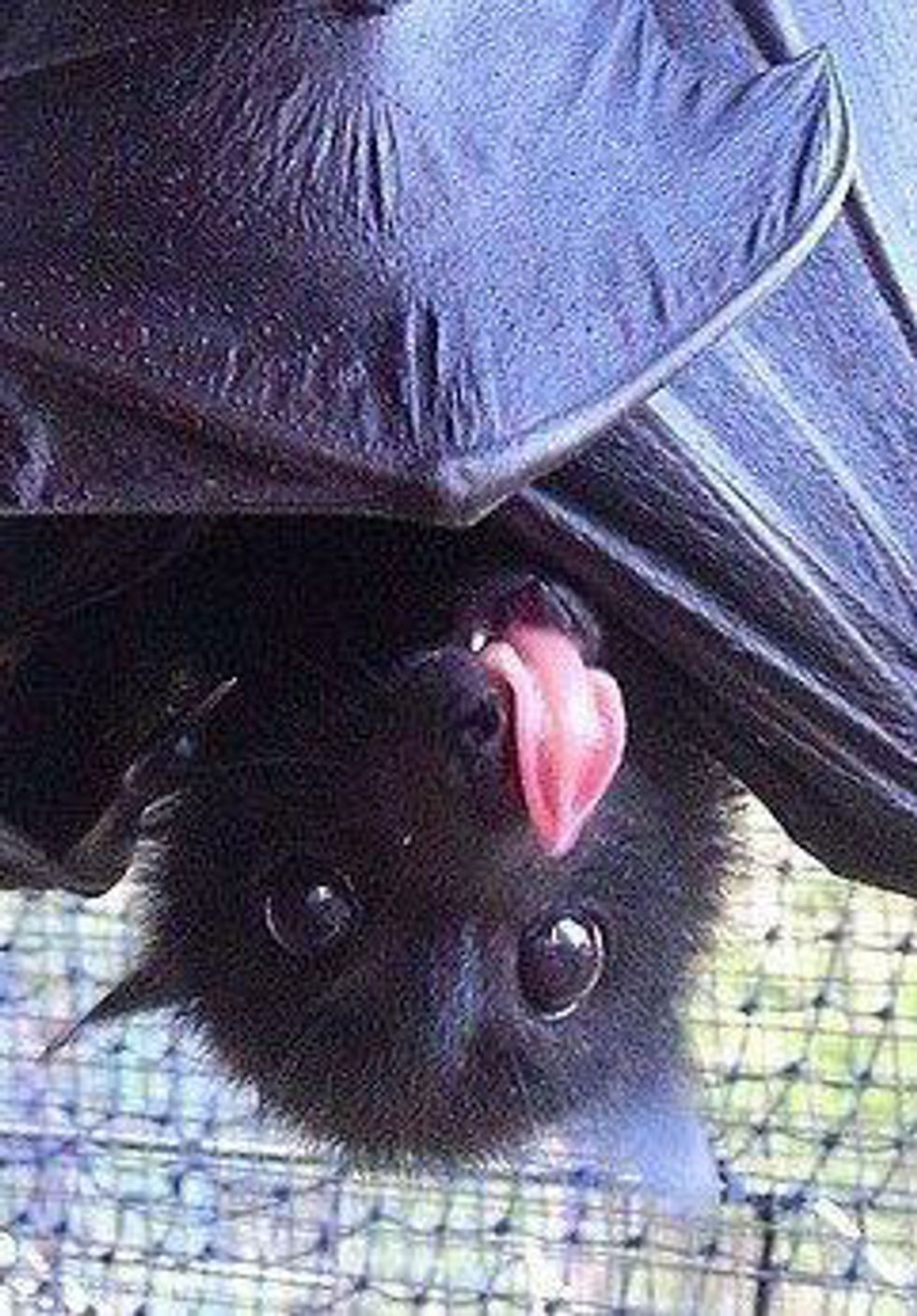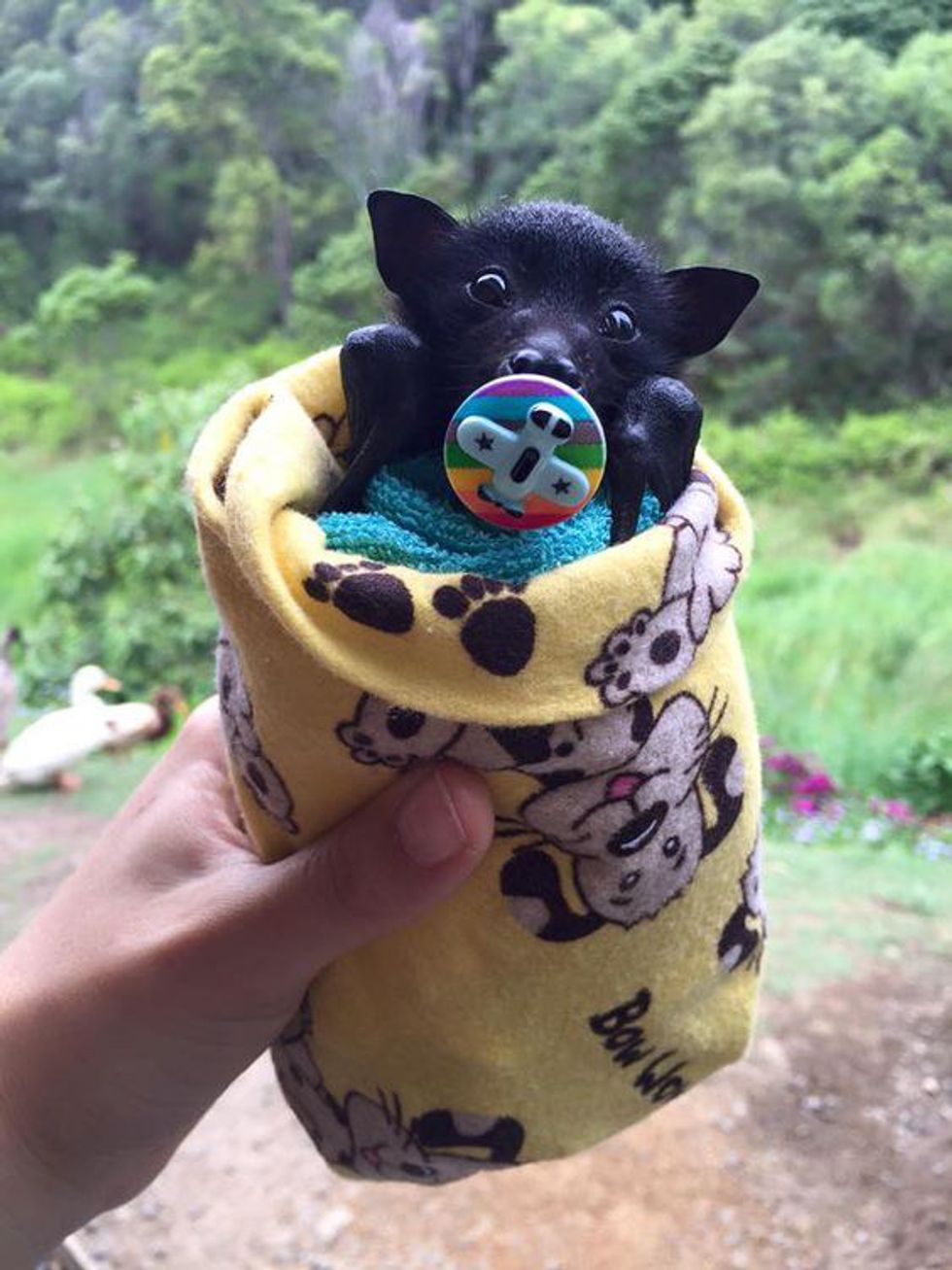Since I was a kid, bats have always been one of my favorite animals. In my childhood, I went on several cavern tours, and bats would often inhabit these caverns. I thought they were cool, mysterious animals.
Now, I like them for a few different reasons. One is that, well, they are adorable; like puppies with wings.
They also vary drastically in size and overall appearance. From the ghost bat, which is small and looks quite grumpy...
...To the large, goofy-looking flying fox:
How could you not love those faces?
The
other main reason why they are one of my favorite animals is that bats are incredibly important to our earth's
ecosystem, and they play a significant role in agriculture as well.
There
are approximately 1,300 species of bats spread across the world, and
they all play a part in controlling insect levels, pollinating plants, dispersing seeds, and producing rich fertilizer, known as "guano" (a.k.a. bat poop). In short, they eat nasty pests and help make
plants, all while looking like adorable pointy-snouted flying puppies.
Bats are divided into two main groups: megabats and microbats.
Microbats are generally smaller and eat insects. They reside primarily in areas in the northern hemisphere, including North America, and they're super important for controlling insects and harmful pests that destroy crops. For example, bats in North America and Mexico feast upon the harmful corn earworm moth, which can destroy a variety of commercial crops. Bats save the United States an estimated $3.7 billion in "reduced crop damage and pesticide use."
Megabats, on the other hand, usually find nourishment in fruits or nectar; they are usually found in the southern hemisphere. As bats visit between flowers, they transport pollen. According to the United States Agriculture Department Forest Service, "over 300 species of fruit depend on bats for pollination," including mangoes, bananas, and guavas. Additionally, fruit-eating bats are very important to seed dispersal, which brings me to the next point: bat poop!
In addition to spreading seeds over large areas through their poop, bat "guano" also acts as a very rich fertilizer. It can also be used as a fungicide and compost activator.
So, bats are incredible and interesting animals. However, the world has not been kind to them. According to the International Union for the Conservation of Nature (IUCN), 26 bat species are critically endangered, and 51 other species are endangered; 954 other species are considered vulnerable to becoming endangered.
In many rural parts of the world, superstitions and stigmas attached to bats are still believed. Many people believe all bats are vampire bats that will attack humans, or that they carry diseases. Only three out of about 1,200 species of bats drink blood, and they very rarely bite humans; they almost never carry diseases. Still, people, especially in Latin America, continue to kill bats in large numbers due to believing in these myths. Also in rural areas, bats are killed for meat and for their body parts believed to have medicinal properties.
The most damaging factor to bat populations is destruction and disturbance of habitat in both urban areas as well as rainforests. Forests that bats use for food and shelter are cut down, and "guano" is irresponsibly harvested, which disturbs the hibernating bats and may kill them.
If you can't afford to donate to any conservation efforts, I urge you to simply be aware of the importance of bats to the environment and agriculture. If you live where bats are common and wouldn't mind having some furry flying friends to eat your mosquitoes, consider buying or building a bat home.
Or, if you have a problem with bats flying into your attic, learn how to humanely remove of bats that live inside your home.
If you'd like to contribute to protecting and saving bats, check out these sites where you can donate to "adopt" a bat:
https://www.batcon.org/membership-support/support/...
https://secure.defenders.org/site/SPageNavigator/w...
https://gifts.worldwildlife.org/gift-center/gifts/...
For more information, I suggest visiting any of the sources I used, or visiting https://batworld.org/ -- a bat sanctuary accredited by both the Global Federation of Animal Sanctuaries and the American Sanctuary Association.























